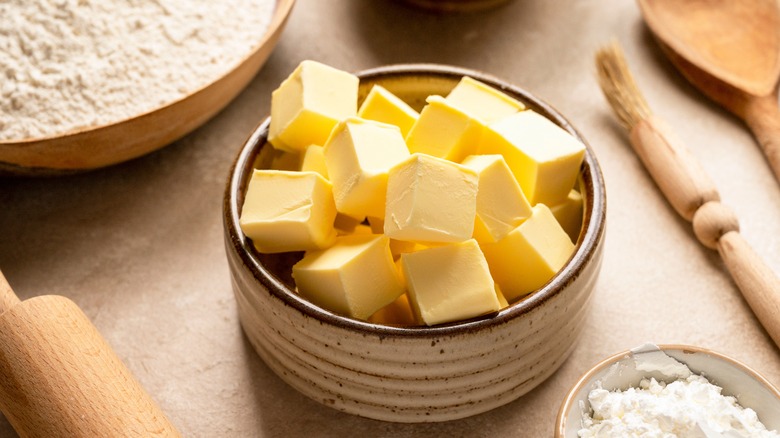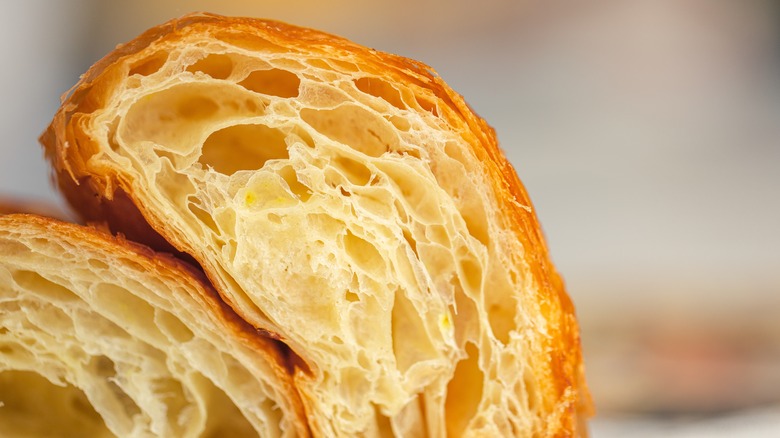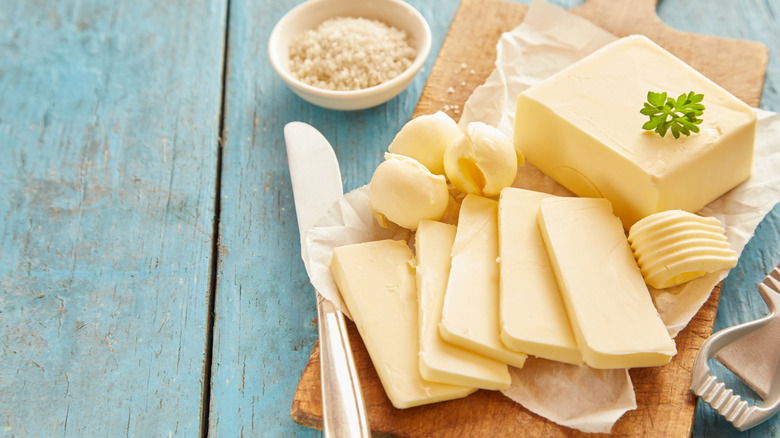Is High-Fat European Butter Actually Ruining Your Bakes?
Getting the best quality ingredients for your next baking project is a no-brainer. Great ingredients will make for a remarkable flavor, but getting the best quality takes more than just reaching for the fanciest or most expensive ingredient. It's more important that it's the correct ingredient for what you're making.
This kind of confusion is evident in the case of buying European-style butter for baked goods. Don't be fooled by the fancy golden box on that Kerrygold. It might taste phenomenal spread on your morning toast, but it won't work as well in your batch of Irish cheddar-apple scones.
The key difference between European-style and American-style butter is the butterfat content. European butter usually has between 82% and 86% butterfat. American butter is usually around 80%. Usually, in cooking and baking, we want more fat because that creates a richer flavor. Baking can be similar to chemistry at times though, and throwing off the expected percentages in recipes can lead to bakes that are flat, greasy, and overly dark. Surprisingly, this has less to do with the fat, and more to do with the loss of moisture.
Role of moisture in baking
The problem with using a higher-fat butter is that it lowers the moisture content of your bake. Butter is made by churning cream until much of the liquid runs off as buttermilk, and leaves behind the solid fats in the form of butter. The length of churning determines how much moisture is trapped inside the butter. European-style butter is usually churned longer meaning that the 2%-4% increase in fat is also an equal loss in water.
This may produce a richer flavor, but it can be detrimental to your baked good. That extra fat will make the butter melt more quickly, and weigh down your bake when you want it to rise. That lost moisture is also important because, during the baking process, it converts into steam which creates a lighter bake. That means using a higher-fat butter in something like a scone will create a dense texture and a flatter bake.
Moisture is also what gives laminated doughs like croissants and cinnamon rolls their light, airy nature. A laminated dough has layers of butter rolled between the dough. When these doughs bake, the water turns to steam and creates pockets of air between all of these thin, crispy layers. Less water means less steam and smaller pockets between a croissant's signature layers. Some folks still swear by it, however, so it may be a simple matter of preference.
Best butter for baking
Because American-style butter is the standard that you will most often find in American grocery stores, it's wise to stick to that unless your recipe states otherwise. A big part of this is simply consistency. There are a lot of chemical reactions occurring in a standard bake, and while it might be possible to adjust for the higher fat content, it usually isn't worth it.
If the butter is the primary flavor in your bake then it might be worth using European-style butter. If you want to accurately follow most recipes, and worry about your baked goods tasting greasy, or things coming out of the oven flat, then it's best to stick with American-style butter.
Using unsalted butter (unless salted butter is called for in the recipe) is another good rule of thumb when it comes to baking with butter. Adding more salt to your recipe can have a similar effect on the delicate chemical balance in your baked goods. This is especially true for recipes that feature yeast because the salt can slow down the fermentation process, and ruin your baked goods' rise.
Getting the best quality ingredients is important when it comes to cooking and baking. Just make sure it never creates an inconsistency with your recipe.


